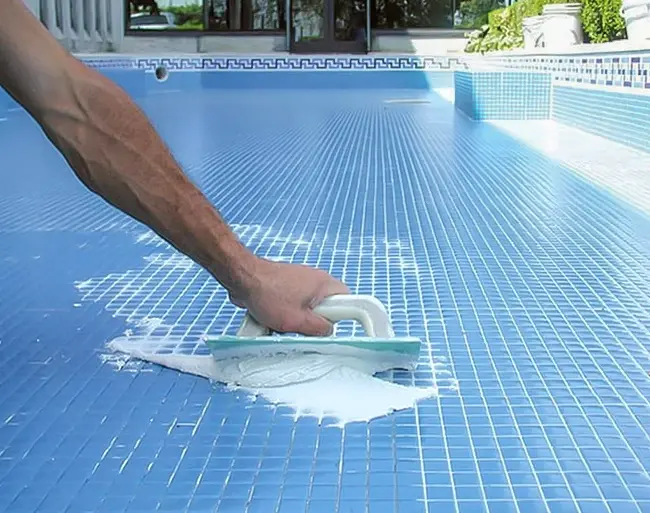Noticed your pool grout turning soft, sandy, or even disappearing?
If your pool is lined with mosaic tiles (gresite) and your water chemistry took a dive — literally — you might be seeing the aftermath of a low pH. No worries, though. Let’s dive into what happened and how to fix it like a pro.

Why Did My Pool Grout Go Soft?
When your pool’s pH drops too low, the water becomes acidic — and acid doesn’t play nicely with cement-based grout. Over time, this eats away at the mineral content, especially calcium, causing:
-
Grout to feel soft, chalky, or crumbly
-
Gaps between your tiles
-
Loose or popping tiles in severe cases
Think of it as your grout being slowly “melted” by acid. Yikes!
Can It Be Fixed? Yes — Here’s How:
✅ Step 1: Fix the Water Chemistry First
Before grabbing any tools or products, stabilize your pool water:
-
pH: 7.2 – 7.6
-
Alkalinity (TAC): 80–120 ppm
-
Calcium hardness: 200–400 ppm
💡 Pro tip: Low calcium makes grout even more vulnerable. Test and balance your water weekly!
✅ Step 2: Assess the Damage
Not all grout issues are equal. Here’s how to tell what you’re dealing with:
| Symptoms | Solution |
|---|---|
| Grout feels soft but is still there | Consolidation is possible |
| Grout is missing or eroded | You’ll need to regrout |
| Tiles are loose or hollow | Time to regrout and reset tiles |
✅ Step 3: Choose Your Repair Strategy
Option A: Consolidate with a Grout Hardener
If the grout is still there but feels weak:
-
Clean it thoroughly (wire brush + pressure wash). I know, it’s hard work, but the good news is – we can do it for you
-
Apply a grout consolidator or mineral hardener
-
Let it soak in and re-crystallize the minerals
💡 This can bring tired grout back to life — no chiseling required!
Option B: Regrout Like a Boss
If the grout is too far gone:
-
Scrape out the old grout (5–10mm deep)
-
Clean the gaps
-
Apply pool-grade cement-based grout (like Mapei Keracolor, Weber, or Fugabella)
-
Let it cure 24–48h before refilling
💡 Make sure it’s chlorine-, acid- and mold-resistant for long-lasting results.
✅ Step 4: Seal and Protect (Optional, but Smart)
Once everything is cured and dry, apply a clear water-repellent sealer to protect your grout.
This helps keep moisture, mold, and chemicals from degrading the grout again.
🚫 What NOT to Do
-
❌ Don’t use silicone — it won’t stick long-term underwater.
-
❌ Don’t grout over soft grout — it will fail.
-
❌ Don’t leave pH unchecked — the damage will return quickly.
🏁 Final Thoughts
Grout is the unsung hero of your tiled pool. Keep your water balanced, and your grout will stay rock solid. But if the damage is done, now you know exactly how to harden it up, seal it in, and keep your pool looking sharp.
💬 Need Help?
We work with the best pool repair pros and product suppliers in Spain.
Contact us for a free consultation or quote — and let’s bring your grout back to life!
